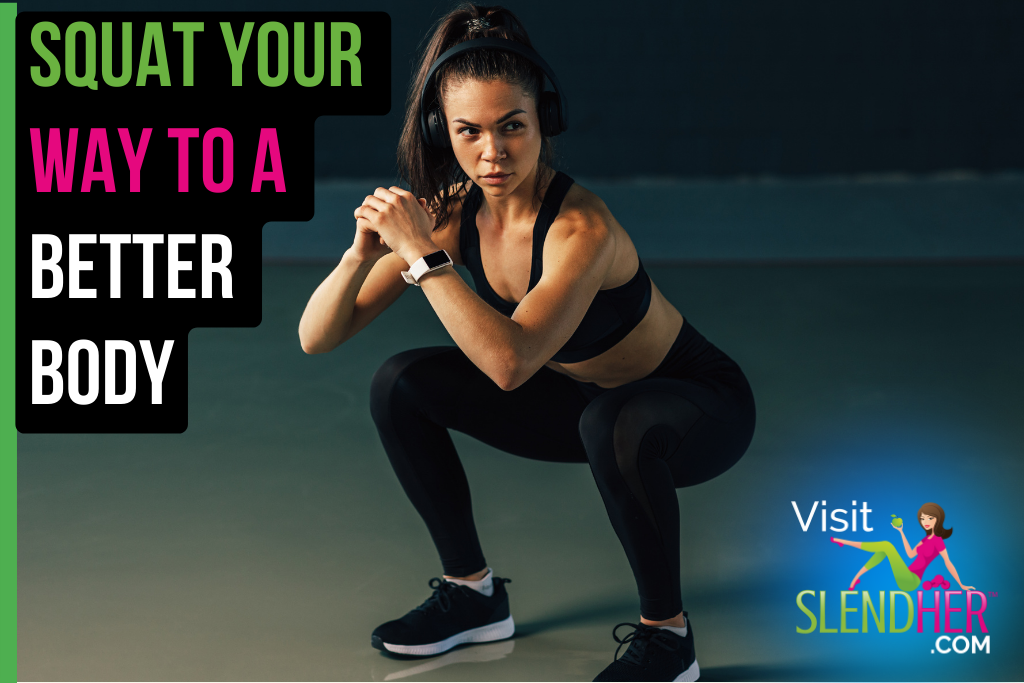
If you’re looking for the miracle exercise, look no further than the squat. While you may assume that this chair sitting and standing movement is only good for the buns, legs, and general lower body, you’d be surprised to learn that the squat is one of the best full body exercises you can add to your fitness plan.
In addition to an overall workout, the squat is also great because you already know how to do it. It’s what is called a functional movement, which simply means it’s an exercise that mimics real-world situations. In this case, the real world movement is sitting down. If you can sit, you can squat. If you need to sit with assistance to lower yourself, you can use the same assistance when you squat. A functional movement is also one that uses multiple muscle groups at the same time. So while your glutes and hamstrings are in play with sitting and squatting, muscles in your midsection–abs, obliques, and lower back–and even in your feet — get to join in the fitness fun.

Squat Like a Tot
We already said that if you know how to sit, you know how to squat. And while that’s true, making the most of your squat requires working in a few fine-tuning factors. For perfect form and precision, it’s time to turn to the professionals–toddlers. It’s no joke; toddlers have natural squatting form and insane depth that as we age we tend to lose due to a higher center of gravity, and loss of flexibility. Your adult body will likely have a hard time mirroring the toddler position, but here are some tips to take away from the tots:

- Start with your feet about shoulder width apart and slightly toed out.
- Look up slightly above parallel to help keep your chest up.
- Use tight abs throughout the exercise to create an arch in your lower back.
- Keep your knees tracking over your feet, making sure not to let your knees or ankles roll in.
- Keep your body weight in the heels–not the balls of your feet. You should be able to wiggle your toes at all times.
- Instead of sinking straight down, send your butt back and down.
- Use all the muscles in your body throughout the exercise to keep your chest up, your shoulders back and down, your abs tight, your lower back curved, and your legs engaged.
Squat Versatility
Once you’re comfortable with the form, it’s time to work squats into your routine. You could do squats the same way every day, but that could get boring and over time become ineffective. The good news is that there is a lot of versatility with the squat movement, allowing you to do them all the time with slight adjustments to focus on different developments.
- Squat Stretch: Your hips are a natural powerhouse for all kinds of exercise–cardio, plyometrics, and strength training. The more flexible you are in your hips, the better your overall all workout will be. With the squat stretch, the idea is to hang out in the lowest part of the squat while using your elbows to push your legs open. Don’t hunch over at the top of the stretch, but instead work on staying long in the torso with your shoulders back and your chest up. Try to pull your butt toward the floor and rotate your hips underneath you. If it helps, hold a dumbbell or kettlebell. The weight can help you sink toward the floor better.
- Positional Weighted Squats: Air squats–or squats done without any weight–are a great for perfecting form as well as getting in some cardio. When you’re ready to add weights, you can do so using dumbbells, kettlebells, or a barbell. When using the barbell, the most common position is the back squat, in which the weight rests across your upper back, traps, and shoulders. Other weighted squats include the front squat, where the bar is held on the front of the body, resting on the chest near the collarbone; and the overhead squat, where the bar is held above your head in midline with your body–your arms should align with your ears.
- Mix It Up: Other ways to change up your squat routine is to add in jumps and single legs. When jumping, squat low, jump high, and land back in the low squat. For single leg squats, extend one leg in front of you and squat as low as you can. Use a chair, bench, or box if these are difficult for you. Start with a higher surface to aim your butt toward and then over time decrease to lower levels. You can also hold onto walls or racks as further support.
Squats are simple, can be done anywhere–even while brushing your teeth–and when done as an air squat, require no equipment at all. Try a week or two of squatting and you’ll soon see–or at least feel–the difference it is making for your muscles.
What is your experience with squats? Share with us in the comments!
[adform]

[…] are many exercises you can and should do to improve the shape of your glutes, such as squats, hip thrusts and lunges. However a focus on the deadlift is a must as it is one major exercise that […]